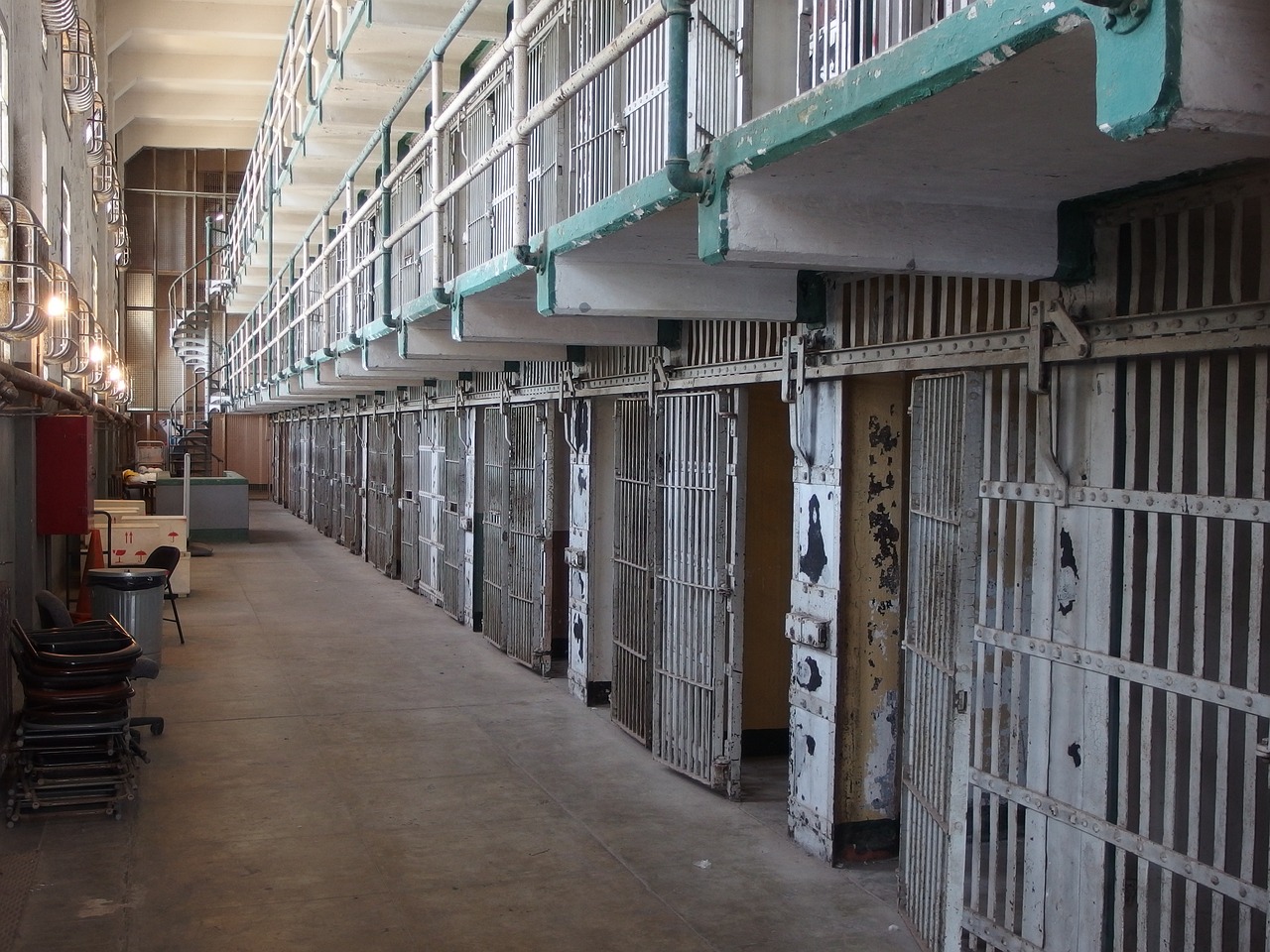Thriving Safety Procedures: An Impact of Human Behavior
In today's fast-paced world, safety procedures are not just a set of rules to follow; they are the backbone of any successful organization. But what really drives these procedures? The answer lies in human behavior. This article delves into how our actions, decisions, and psychological factors influence safety protocols across various environments. It's not merely about compliance; it's about understanding the psychological landscape that shapes our responses to safety measures. By unlocking these insights, organizations can enhance their safety protocols and foster a culture that prioritizes well-being.
Human behavior plays a pivotal role in determining safety outcomes in any setting. Think about it: when was the last time a safety procedure was ignored? Often, it’s not because the procedure is flawed, but because of the human tendency to overlook risks. Understanding the psychological and social factors that drive behavior can help organizations create effective safety procedures that align with human tendencies. For instance, the fear of reprimand may encourage compliance, but it can also foster a culture of silence where employees hesitate to report unsafe conditions. This paradox highlights the need for a deeper understanding of how we behave in relation to safety.
A strong safety culture is like the soil in which safety procedures grow. It encourages employees to prioritize safety in their daily activities, making it an integral part of their work life. When employees feel that their safety is valued, they are more likely to comply with safety protocols and report unsafe conditions. This section explores how fostering a positive safety culture can lead to improved compliance and reduced accidents. Just as a garden flourishes with care and attention, so too does a workplace thrive when safety is prioritized.
Key elements such as communication, training, and leadership commitment contribute to a positive safety culture. Each of these elements plays a crucial role in enhancing safety procedures. For example, effective communication ensures that everyone is on the same page regarding safety expectations, while ongoing training keeps safety knowledge fresh and relevant. Leadership commitment is the driving force that inspires employees to take safety seriously; when leaders prioritize safety, employees are likely to follow suit.
Open communication is vital for a robust safety culture. It’s not just about sending out memos; it’s about creating an environment where employees feel safe to voice their concerns. Strategies for effective communication include:
- Regular safety meetings that encourage participation.
- An anonymous reporting system for unsafe behaviors.
- Clear messaging about safety expectations and protocols.
These strategies promote safety awareness and encourage reporting of unsafe behaviors, ensuring that everyone is engaged in the safety conversation.
Leaders set the tone for safety within an organization. Their commitment to safety can profoundly influence the overall culture and employee engagement. When leaders actively participate in safety training and prioritize safe practices, they send a clear message: safety is non-negotiable. This subsection examines how leadership commitment and behavior can influence the overall safety culture, creating a ripple effect that encourages employees to adopt safe behaviors.
Proper training is essential for ensuring that employees understand safety procedures. It’s not enough to hand out a manual and call it a day. Ongoing training and development are crucial in fostering safe behaviors within the workplace. Organizations should implement refresher courses and hands-on training sessions that keep safety top of mind. This commitment to continuous learning not only enhances safety knowledge but also empowers employees to take ownership of their safety responsibilities.
Behavioral safety techniques focus on identifying and modifying unsafe behaviors. Recognizing that behavior is often a product of environmental and psychological factors allows organizations to implement tailored interventions. This section explores various techniques that organizations can implement to encourage safer practices among employees.
Regular observation and feedback are crucial for promoting safe behaviors. Structured feedback helps reinforce positive safety practices and reduce risky behaviors. By observing employees in real-time and providing constructive feedback, organizations can create a culture of accountability where safety becomes a shared responsibility.
Incentives can motivate employees to prioritize safety. Reward systems, whether through recognition programs or tangible rewards, can be effective in encouraging safe behavior and compliance with safety procedures. When employees see that their efforts are acknowledged, they are more likely to continue prioritizing safety.
Regular evaluation of safety procedures ensures their effectiveness. Organizations should implement methods for assessing safety protocols and making necessary adjustments based on human behavior insights. This proactive approach not only enhances safety but also fosters a culture of continuous improvement.
Q: How can organizations improve their safety culture?
A: Organizations can improve safety culture by fostering open communication, providing ongoing training, and ensuring leadership commitment to safety.
Q: What role does employee feedback play in safety procedures?
A: Employee feedback is crucial as it provides insights into the effectiveness of safety procedures and helps identify areas for improvement.
Q: Are incentives effective in promoting safe behavior?
A: Yes, incentives can be very effective in motivating employees to prioritize safety and comply with safety protocols.

The Role of Human Behavior in Safety
Human behavior significantly affects safety outcomes in various environments, from workplaces to public spaces. Understanding the psychological and social factors that drive behavior is crucial for organizations looking to create effective safety procedures. Imagine a construction site bustling with activity; the workers are focused on their tasks, but one small mistake or a lapse in attention could lead to serious consequences. This scenario underscores the importance of human behavior in safety protocols.
At the heart of this issue lies the concept of risk perception. How individuals perceive risk can influence their actions and decisions. For instance, if a worker believes that the likelihood of an accident is low, they may take shortcuts or neglect safety measures. Conversely, understanding the real risks involved can lead to more cautious behavior. This is where education and training play a pivotal role. By providing employees with the knowledge they need, organizations can help them make informed decisions regarding safety.
Furthermore, social dynamics within a workplace can either bolster or undermine safety practices. Peer influence is a powerful force; if employees see their colleagues ignoring safety protocols, they may feel compelled to follow suit. On the other hand, a culture that promotes safety can lead to collective accountability. When everyone is on board with safety measures, the likelihood of accidents decreases significantly. This is why fostering a positive safety culture is essential for any organization committed to protecting its workforce.
Another critical aspect of human behavior in safety is the emotional response to hazards. Stress, anxiety, and fatigue can all impair judgment and lead to unsafe practices. For example, a tired worker may overlook a crucial safety step simply because they are mentally exhausted. Organizations must recognize these emotional factors and work to mitigate them through supportive policies and practices. This could include regular breaks, mental health resources, and a focus on work-life balance.
To sum it up, the role of human behavior in safety is multifaceted. It encompasses risk perception, social dynamics, and emotional responses. By understanding these elements, organizations can tailor their safety procedures to align with human tendencies, ultimately fostering a safer environment for everyone involved. As we delve deeper into safety culture and its importance, keep in mind that enhancing safety protocols is not just about rules and regulations; it's about understanding the people behind those protocols.

Safety Culture and Its Importance
In today's fast-paced work environments, the concept of safety culture has emerged as a cornerstone for organizations aiming to minimize risks and enhance employee well-being. But what exactly does safety culture mean? It refers to the shared values, beliefs, and practices regarding safety within an organization. When safety becomes a core value, it permeates every level of the organization, influencing how employees perceive and respond to potential hazards.
Creating a strong safety culture is not merely a checkbox on a compliance list; it is a transformative approach that can lead to significant improvements in workplace safety. Imagine a workplace where every employee feels empowered to speak up about safety concerns, where reporting unsafe practices is not just encouraged but celebrated. This kind of environment fosters trust and collaboration, which are essential for effective safety management. When employees are engaged and feel responsible for safety, the likelihood of accidents decreases dramatically.
Research has shown that organizations with a strong safety culture experience lower accident rates and higher employee morale. This is not just a coincidence; it’s a direct result of how safety is prioritized. When safety is integrated into daily operations, it leads to:
- Increased Compliance: Employees are more likely to follow safety protocols when they understand their importance and feel a personal commitment to them.
- Enhanced Communication: Open lines of communication about safety concerns lead to quicker identification of potential hazards.
- Employee Empowerment: When workers are encouraged to take ownership of safety, they become proactive rather than reactive.
Moreover, a positive safety culture can also have a ripple effect beyond the workplace. It can influence how employees approach safety in their personal lives, creating a community of safety-conscious individuals. This is akin to planting seeds of safety that can grow and flourish, benefiting not just the organization but society as a whole.
In summary, fostering a strong safety culture is not just beneficial; it is essential. It transforms safety from a set of rules to a shared responsibility, resulting in a safer, more productive workplace. As we delve deeper into the elements that contribute to this culture, it becomes clear that effective communication, committed leadership, and ongoing training are critical components that organizations must prioritize to cultivate a thriving safety culture.
- What is safety culture? Safety culture refers to the shared values and practices regarding safety within an organization.
- Why is safety culture important? A strong safety culture leads to improved safety outcomes, reduced accidents, and higher employee morale.
- How can organizations improve their safety culture? By fostering open communication, demonstrating leadership commitment, and providing ongoing training.

Elements of a Positive Safety Culture
Creating a positive safety culture is like nurturing a delicate plant; it requires attention, care, and the right environment to flourish. At the heart of this culture are several key elements that work together to promote safety within the workplace. Understanding these elements can help organizations develop effective safety procedures that resonate with their employees. Let's dive into the critical components that contribute to a thriving safety culture.
First and foremost, communication plays a pivotal role in shaping a positive safety culture. Imagine trying to navigate a maze without clear signs; that's what employees face when communication is lacking. Open lines of communication ensure that everyone is on the same page regarding safety protocols. Regular meetings, feedback sessions, and an open-door policy can create a space where employees feel comfortable sharing their concerns and suggestions. This two-way dialogue not only enhances safety awareness but also fosters a sense of belonging and ownership among employees.
Another essential element is training and development. Just as athletes train to improve their skills, employees need ongoing training to stay updated on safety practices. Regular workshops and refresher courses help reinforce safe behaviors and ensure that employees are equipped with the knowledge they need to navigate potential hazards. Organizations that invest in their employees' training demonstrate a commitment to safety, which can significantly boost morale and compliance.
Moreover, the commitment of leadership is crucial. Leaders set the tone for safety within an organization. When leaders actively prioritize safety, it sends a clear message that safety is a core value. This can be achieved through visible participation in safety initiatives, such as leading safety drills or participating in safety audits. Employees are more likely to engage in safe practices when they see their leaders walking the talk.
Furthermore, recognizing and rewarding safe behavior can significantly enhance a positive safety culture. When employees feel appreciated for their efforts to maintain safety, it motivates them to continue those behaviors. Incentive programs can be effective in this regard, whether through verbal recognition, safety awards, or even tangible rewards. These programs not only encourage compliance but also create a sense of camaraderie among employees as they work towards common safety goals.
In summary, the elements of a positive safety culture—communication, training, leadership commitment, and recognition—are interconnected and essential for fostering a safe working environment. By focusing on these areas, organizations can cultivate a culture where safety is not just a procedure but a shared value embraced by all employees.
- What is a safety culture?
A safety culture refers to the shared values, beliefs, and behaviors that prioritize safety in an organization. It shapes how employees perceive and respond to safety issues. - How can communication improve safety culture?
Effective communication ensures that all employees are aware of safety protocols, feel comfortable reporting unsafe conditions, and can share their insights on improving safety. - Why is leadership important in safety culture?
Leaders influence the organization's priorities. Their commitment to safety sets an example for employees and encourages a collective focus on safe practices. - What role does training play in safety?
Training equips employees with the knowledge and skills necessary to recognize hazards and follow safety procedures, which is vital for preventing accidents.

Effective Communication Strategies
When it comes to fostering a culture of safety, effective communication is the backbone that supports all safety initiatives. Think of communication as the oil in a well-running machine; without it, everything grinds to a halt. Open lines of communication encourage employees to share their concerns, report unsafe conditions, and engage in discussions about safety practices. But how can organizations ensure that communication is not just a one-way street? Here are some strategies that can help.
First and foremost, establishing a feedback loop is crucial. Employees should feel empowered to voice their opinions and concerns without fear of retribution. This can be achieved through regular safety meetings, where team members can discuss challenges and brainstorm solutions together. When employees see that their feedback leads to real changes, they are more likely to remain engaged and vigilant about safety.
Another effective strategy is to utilize multiple channels of communication. Relying solely on emails or memos can lead to important safety information getting lost in the shuffle. Instead, organizations can adopt a multi-channel approach that includes:
- Visual aids such as posters and infographics to convey safety messages clearly.
- Digital platforms like intranets or safety apps that allow for real-time updates and alerts.
- Regular training sessions that incorporate interactive elements, ensuring that employees are not just passive recipients of information.
Additionally, using storytelling as a tool can make safety communication more relatable. By sharing real-life incidents and outcomes, organizations can highlight the importance of adhering to safety protocols. This method not only captures attention but also fosters a sense of urgency and responsibility among employees. After all, stories have a way of sticking in our minds long after the facts have faded away.
Finally, it’s essential to recognize the role of leadership in driving effective communication. Leaders should model the behavior they wish to see in their teams. This means actively participating in safety discussions, being approachable for questions, and demonstrating a genuine concern for employee well-being. When leadership prioritizes safety communication, it sends a powerful message that safety is a collective responsibility.
In summary, effective communication strategies are pivotal in building a strong safety culture. By fostering an environment where feedback is welcomed, utilizing diverse communication channels, employing storytelling techniques, and demonstrating leadership commitment, organizations can significantly enhance their safety procedures. Remember, safety is not just a set of rules to follow; it’s a mindset that thrives on open dialogue and collaboration.
Q1: Why is communication important for safety culture?
A: Effective communication helps identify safety concerns, encourages reporting of unsafe behaviors, and fosters a collaborative approach to safety.
Q2: How can I encourage my team to communicate more about safety?
A: Create a safe space for discussions, offer incentives for reporting safety issues, and lead by example by openly discussing safety matters.
Q3: What are some tools I can use for safety communication?
A: Consider using visual aids, safety apps, regular training sessions, and digital platforms for real-time updates and alerts.
Q4: How can storytelling improve safety communication?
A: Storytelling makes safety messages more relatable and memorable, helping employees understand the real consequences of unsafe behaviors.

Leadership's Role in Safety Culture
Leadership plays a pivotal role in shaping and nurturing a strong safety culture within an organization. When leaders prioritize safety, it sends a clear message to employees that safety is not just a checkbox but a fundamental value of the organization. This commitment manifests in various ways, from the policies they enforce to the behaviors they model. For instance, when leaders actively participate in safety training and discussions, it demonstrates their dedication to creating a safe working environment. Employees are more likely to adopt safe practices when they see their leaders taking safety seriously.
Moreover, effective leaders foster an atmosphere where safety concerns can be openly discussed without fear of retribution. This open-door policy encourages employees to report unsafe conditions or behaviors, knowing that their input is valued. By actively engaging with staff and soliciting feedback on safety procedures, leaders can gain valuable insights into potential hazards and areas for improvement. This two-way communication not only enhances safety protocols but also empowers employees, making them feel like integral parts of the safety culture.
In addition to communication, leaders must also be visible in their commitment to safety. Regularly participating in safety audits or inspections can reinforce the importance of safety in everyday operations. When employees see their leaders in the field, actively looking for hazards and discussing safety measures, it reinforces the idea that safety is everyone's responsibility. This visibility can significantly enhance employee engagement and adherence to safety practices.
Furthermore, leaders should lead by example. This means not only following safety protocols themselves but also demonstrating a proactive attitude towards safety. For instance, if a leader consistently wears personal protective equipment (PPE) and adheres to safety guidelines, it sets a standard for others to follow. It’s about creating a culture where safety is woven into the fabric of the organization, rather than being treated as an afterthought.
To summarize, the role of leadership in cultivating a safety culture cannot be overstated. Their actions, communication styles, and commitment to safety significantly influence how employees perceive and engage with safety protocols. When leaders prioritize safety, they not only protect their employees but also enhance overall organizational performance. A strong safety culture, driven by effective leadership, can lead to fewer accidents, improved morale, and a more productive workplace.
- What is the most important aspect of leadership in safety culture?
Effective communication and leading by example are crucial aspects of leadership in fostering a strong safety culture. - How can leaders encourage employees to report safety concerns?
By creating an open and non-punitive environment where employees feel safe to express their concerns without fear of repercussions. - What role does training play in leadership's approach to safety?
Ongoing training ensures that leaders are well-informed about safety protocols and can effectively communicate them to their teams.

Training and Development for Safety
When it comes to ensuring a safe workplace, training and development are absolutely crucial. Think of it like teaching someone to ride a bike; without the right guidance, they might wobble, fall, or even crash. Similarly, employees need comprehensive training to navigate safety protocols effectively. This training goes beyond just a one-time orientation; it should be a continuous process that evolves with the organization’s needs and the changing landscape of safety regulations.
Imagine walking into a workplace where every employee is not only aware of safety procedures but is also actively engaged in practicing them. This is the result of a robust training program that emphasizes the importance of safety in every aspect of daily operations. Regular training sessions, workshops, and refresher courses help keep safety at the forefront of employees' minds. Moreover, these sessions can be tailored to address specific risks associated with different roles within the organization, ensuring that everyone is equipped with the knowledge they need to stay safe.
In addition to formal training, development opportunities such as mentorship programs and hands-on simulations can greatly enhance safety awareness. For instance, a new employee paired with an experienced mentor can learn the ropes of safety procedures in real-time, gaining insights that a manual simply can't provide. This kind of peer-to-peer learning fosters a culture of safety where employees feel empowered to speak up about unsafe practices and suggest improvements.
Moreover, incorporating technology into safety training can yield impressive results. Virtual reality (VR) simulations, for example, allow employees to experience hazardous situations in a controlled environment, enabling them to practice their responses without the risk of real-world consequences. These immersive experiences can significantly boost retention and understanding of safety protocols.
To further illustrate the importance of ongoing training, consider the following table that outlines the key components of an effective safety training program:
| Component | Description |
|---|---|
| Initial Training | Comprehensive onboarding for new employees covering all safety protocols. |
| Regular Refresher Courses | Scheduled training sessions to keep safety knowledge up-to-date. |
| Hands-On Simulations | Practical exercises to reinforce safety procedures in real-life scenarios. |
| Feedback Mechanisms | Opportunities for employees to provide input on safety practices and training effectiveness. |
| Technology Integration | Use of tools like VR and e-learning platforms to enhance training engagement. |
In conclusion, investing in training and development for safety is not merely a checkbox exercise; it’s a vital strategy that can save lives and reduce workplace accidents. When employees are well-trained and feel supported in their safety efforts, they are more likely to adhere to protocols and contribute to a culture of safety. So, let's commit to making safety training an ongoing priority—because when it comes to safety, knowledge truly is power.
- Why is ongoing safety training important? Ongoing safety training keeps employees updated on the latest safety protocols and practices, ensuring they are well-prepared to handle any situation.
- How can technology enhance safety training? Technology, such as virtual reality simulations, can provide immersive experiences that improve understanding and retention of safety procedures.
- What role does leadership play in safety training? Leaders set the tone for safety culture and must actively support and participate in training initiatives to demonstrate their commitment to employee safety.

Behavioral Safety Techniques
When we talk about , we're diving into an approach that recognizes the profound impact of human behavior on workplace safety. It's not just about following rules and regulations; it's about understanding the why behind actions. Why do employees sometimes take shortcuts? Why do they overlook safety protocols? By addressing these questions, organizations can foster a safer environment. Behavioral safety techniques focus on identifying and modifying unsafe behaviors, creating a culture where safety is a shared responsibility.
One effective method is the implementation of observation and feedback mechanisms. This involves regularly observing employees as they perform their tasks and providing constructive feedback on their safety practices. Imagine a coach watching their players during a game—it's all about spotting the good plays and gently correcting the mistakes. This process not only helps in reinforcing positive safety behaviors but also creates a dialogue around safety practices. When employees know they are being observed, they are more likely to adhere to safety standards. It’s like having a buddy system where everyone looks out for each other.
Furthermore, the use of incentives for safe behavior can significantly enhance compliance with safety procedures. Who doesn’t love a little recognition or reward? By implementing reward systems, organizations can motivate their employees to prioritize safety. For instance, a company might offer monthly awards for teams that demonstrate exceptional safety records. This not only boosts morale but also encourages a healthy competition among teams to maintain safe practices. Consider this a friendly race where everyone wins by keeping safety at the forefront.
To illustrate the effectiveness of these techniques, let's look at a simple table that outlines different behavioral safety techniques and their benefits:
| Technique | Benefits |
|---|---|
| Observation and Feedback | Reinforces positive behaviors, encourages open communication |
| Incentives for Safe Behavior | Motivates employees, fosters a competitive spirit |
| Training and Development | Enhances knowledge, builds confidence in safety practices |
In conclusion, behavioral safety techniques are all about creating an environment where safety is ingrained in the culture. By focusing on observation, feedback, and incentives, organizations can not only improve compliance but also cultivate a workforce that is genuinely committed to safety. After all, safety isn’t just a set of rules—it’s a way of life.
- What are behavioral safety techniques? These are strategies aimed at identifying and modifying unsafe behaviors in the workplace.
- How can observation improve safety? Regular observation allows for immediate feedback, helping employees to correct unsafe practices in real-time.
- What role do incentives play in safety? Incentives motivate employees to engage in safe behaviors, making safety a priority within the organization.

Observation and Feedback Mechanisms
Observation and feedback mechanisms are the backbone of any effective safety culture. They serve as the eyes and ears of an organization, helping to identify unsafe practices before they lead to accidents. Think of it as having a safety net that not only catches you when you fall but also helps you avoid falling in the first place. Regular observation allows safety personnel to spot behaviors that may not align with established safety protocols. This proactive approach can prevent incidents and foster a sense of accountability among employees.
Feedback is equally crucial. It’s not just about pointing out what’s wrong; it’s about guiding individuals toward what’s right. Constructive feedback should be timely, specific, and actionable. For example, if a supervisor notices an employee bypassing safety equipment, a simple “I saw you didn’t wear your helmet while working on the site” isn’t enough. Instead, a more effective approach would be, “I noticed you weren’t wearing your helmet. It’s essential for your protection, especially when working in high-risk areas. Let’s ensure you’re equipped properly next time.” This method not only addresses the issue but also reinforces the importance of safety gear.
To implement effective observation and feedback mechanisms, organizations can establish structured programs that include:
- Regular safety audits to assess compliance with safety procedures.
- Peer observation initiatives where employees can observe one another and provide feedback.
- Anonymous reporting systems that allow employees to report unsafe behaviors without fear of retaliation.
Additionally, leveraging technology can enhance these mechanisms. For instance, using mobile apps for reporting unsafe conditions or behaviors can streamline the feedback process. These tools can also provide real-time data, allowing safety teams to identify trends and address potential issues before they escalate. Ultimately, the goal is to create an environment where safety is a shared responsibility, and everyone feels empowered to contribute to a safer workplace.
In summary, observation and feedback mechanisms are not just about compliance; they are about cultivating a culture of safety where employees feel valued and engaged. By establishing clear channels for observation and feedback, organizations can foster safer behaviors and reduce the likelihood of accidents. It’s a win-win situation that not only protects employees but also enhances overall productivity and morale.
Q: What is the purpose of observation and feedback mechanisms in a workplace?
A: The purpose is to identify unsafe behaviors and practices, provide constructive feedback, and promote a culture of safety among employees.
Q: How can technology assist in observation and feedback?
A: Technology can streamline reporting processes, provide real-time data, and enhance communication regarding safety practices.
Q: What are some effective strategies for giving feedback?
A: Effective strategies include being timely, specific, and actionable, as well as focusing on positive reinforcement and constructive criticism.
Q: Can peer observations improve safety culture?
A: Yes, peer observations can create a sense of accountability and encourage employees to look out for one another, thus enhancing the overall safety culture.

Incentives for Safe Behavior
When it comes to enhancing safety in the workplace, one of the most effective strategies is to implement . Just like a carrot dangling in front of a donkey, these incentives can motivate employees to prioritize safety, making it a core part of their daily routines. But what exactly do these incentives look like, and how can they be structured to create a culture of safety?
First off, let's consider the psychology behind incentives. People are naturally inclined to respond to rewards. Whether it's a simple pat on the back or a more substantial financial bonus, recognition plays a crucial role in reinforcing positive behavior. A well-designed incentive program can lead to a significant reduction in accidents and unsafe practices. For instance, organizations can implement a point system where employees earn points for reporting unsafe conditions, attending safety training sessions, or demonstrating safe practices. These points can then be redeemed for various rewards, ranging from gift cards to an extra day off.
Moreover, the effectiveness of these incentives can be amplified by ensuring that they are visible and attainable. Employees need to see that their efforts are being recognized and rewarded. Regularly showcasing success stories in company newsletters or during team meetings can serve as a powerful reminder of the benefits of safe behavior. For example, consider a company that highlights a team that achieved a month without accidents. They could reward that team with a celebratory lunch, which not only recognizes their achievement but also encourages other teams to strive for similar results.
However, it's essential to strike a balance. While monetary rewards can be effective, they shouldn't be the sole focus. Non-monetary incentives, such as public recognition or additional responsibilities, can often be just as motivating, if not more so. Employees appreciate being acknowledged for their hard work and commitment to safety, and sometimes, a simple thank-you can go a long way in fostering a positive safety culture.
To illustrate the impact of incentives on safety behavior, let's take a look at a hypothetical scenario:
| Incentive Type | Description | Expected Outcome |
|---|---|---|
| Point System | Employees earn points for safe behaviors which can be redeemed for rewards. | Increased reporting of unsafe conditions, leading to proactive safety measures. |
| Recognition Programs | Monthly awards for individuals or teams that demonstrate exceptional safety practices. | Boosted morale and motivation to adhere to safety protocols. |
| Team Challenges | Friendly competitions between teams to achieve the best safety record. | Enhanced teamwork and collective responsibility for safety. |
In conclusion, the power of incentives in promoting safe behavior cannot be underestimated. When thoughtfully implemented, they create an environment where safety is not just a requirement but a shared value. By recognizing and rewarding safe practices, organizations can cultivate a culture that prioritizes safety, ultimately leading to a significant reduction in workplace incidents.
- What types of incentives are most effective for promoting safety?
The effectiveness of incentives can vary, but a mix of monetary and non-monetary rewards, such as recognition programs and point systems, generally works well. - How can I measure the success of my safety incentive program?
Success can be measured by monitoring the number of reported unsafe conditions, the frequency of accidents, and employee participation in safety training. - Are there any downsides to using incentives for safety?
Yes, if not carefully managed, incentives can lead to unintended consequences, such as employees hiding unsafe behaviors to achieve rewards. It's crucial to create a balanced approach.

Evaluating Safety Procedures
Evaluating safety procedures is not just a checkbox activity; it's a critical process that ensures the effectiveness and relevance of safety protocols in any organization. Just like a car needs regular maintenance checks to run smoothly and safely, safety procedures require ongoing evaluation to adapt to the ever-changing workplace dynamics. This evaluation process can significantly reduce risks and enhance overall safety culture.
To effectively evaluate safety procedures, organizations can adopt a multi-faceted approach that includes both quantitative and qualitative assessments. This means not only measuring the number of incidents or near misses but also understanding the underlying reasons behind these occurrences. By doing so, companies can gain valuable insights into human behavior and how it interacts with safety protocols.
One effective method for evaluating safety procedures is through the implementation of regular audits. These audits can be conducted by internal teams or external experts who can provide an unbiased perspective on the effectiveness of current safety measures. During these audits, several key factors should be assessed:
- Compliance with Established Procedures: Are employees following the safety protocols as intended?
- Incident Reporting: Is there a reliable system in place for reporting unsafe conditions or behaviors?
- Employee Feedback: Are employees encouraged to provide feedback on safety practices?
Moreover, conducting surveys can also be an effective way to gather feedback from employees regarding their perceptions of safety procedures. These surveys can reveal valuable information such as:
| Survey Question | Response Options |
|---|---|
| Do you feel safe at work? | Yes / No / Unsure |
| Have you witnessed unsafe behavior? | Yes / No |
| Do you believe safety procedures are effective? | Strongly Agree / Agree / Disagree / Strongly Disagree |
By analyzing the results from these surveys, organizations can pinpoint areas that need improvement and tailor their safety procedures accordingly. It's essential to foster an environment where employees feel comfortable sharing their concerns and suggestions without fear of repercussions. This open dialogue can lead to a more engaged workforce and a stronger safety culture.
Finally, it’s crucial to remember that safety procedures are not static; they should evolve over time. Regularly reviewing and updating safety protocols based on the findings from audits, surveys, and incident reports can help organizations stay ahead of potential hazards. Just as the seasons change, so too should our approach to safety. By keeping safety procedures dynamic and responsive to human behavior, organizations can create a safer and more productive work environment.
- Why is it important to evaluate safety procedures regularly? Regular evaluations help identify gaps in safety protocols and ensure they remain effective in preventing accidents.
- What methods can be used to evaluate safety procedures? Methods include audits, surveys, and analyzing incident reports to gather comprehensive data.
- How can employee feedback improve safety procedures? Employee feedback provides insights into the practical effectiveness of safety measures and highlights areas for improvement.
Frequently Asked Questions
- What is the impact of human behavior on safety procedures?
Human behavior plays a crucial role in safety outcomes. By understanding the psychological and social factors that drive behavior, organizations can tailor their safety procedures to align with how people naturally act, ultimately leading to better compliance and fewer accidents.
- How can a positive safety culture be fostered in an organization?
Fostering a positive safety culture involves several key elements, such as effective communication, ongoing training, and strong leadership commitment. When employees feel safe to express concerns and are engaged in safety practices, it creates an environment where safety is prioritized in daily operations.
- What role does communication play in enhancing safety?
Open communication is vital for a robust safety culture. It encourages employees to report unsafe behaviors and share safety concerns. Effective communication strategies, such as regular meetings and feedback loops, help keep safety at the forefront of everyone's mind.
- Why is training important for safety procedures?
Training ensures that employees are well-versed in safety protocols and understand the importance of adhering to them. Ongoing training and development help reinforce safe behaviors and keep everyone updated on the latest safety practices and regulations.
- What are behavioral safety techniques?
Behavioral safety techniques focus on identifying and modifying unsafe behaviors. These techniques can include observation and feedback mechanisms, which help reinforce positive safety practices and encourage employees to engage in safer behaviors.
- How can organizations motivate employees to prioritize safety?
Organizations can use incentives to motivate employees to prioritize safety. Reward systems, such as bonuses or recognition programs, can effectively encourage compliance with safety procedures and promote a culture of safety within the workplace.
- How often should safety procedures be evaluated?
Regular evaluation of safety procedures is essential to ensure their effectiveness. Organizations should assess their safety protocols periodically and make necessary adjustments based on insights gained from observing human behavior and feedback from employees.



















